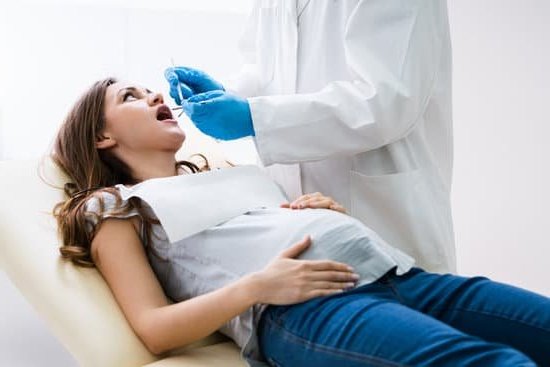Feline pregnancy is an exciting and crucial time for both the mother cat and her human companions. Understanding the reproductive cycle of cats, recognizing signs of pregnancy, and providing proper care are essential for ensuring the health and well-being of the mother and her kittens.
In this article, we will delve into various aspects of feline pregnancy, including the length of cat pregnancy, nutrition and care, preparing for the arrival of kittens, potential complications, and aftercare for the mother cat and her newborns.
The feline reproductive cycle is an intriguing process that plays a vital role in continuing the lineage of domestic cats. From mating to birth, there are several stages that determine the overall health and development of the kittens. Recognizing the signs of pregnancy in cats is important for providing appropriate care and making necessary preparations for the impending arrival of new furry additions to the family.
Understanding how long a cat pregnancy lasts is fundamental in ensuring that all necessary arrangements are made for the comfort and well-being of both the mother cat and her kittens. By learning about feline gestation periods, prospective cat owners can adequately prepare themselves for this significant period in their pet’s life. Stay tuned as we explore these topics in more detail throughout this article.
Understanding the Feline Reproductive Cycle
The feline reproductive cycle is an essential aspect of understanding how long a cat pregnancy lasts. Cats are known for their ability to reproduce easily, and their reproductive cycle consists of four stages: proestrus, estrus, metestrus, and anestrus.
During proestrus, female cats experience a period of heat but are not yet ready to mate. This stage can last for around 1-2 days, during which the cat may display signs such as increased affection towards other cats and restlessness.
Estrus is the stage where the female cat is fertile and ready to mate. This phase can last from 3 to 7 days, but in some cases, it can stretch to up to 10 days. During this time, cats become more vocal, excessively affectionate, and will often assume a mating position when petted near the back end.
Metestrus marks the end of the heat cycle if the cat has not mated. It usually lasts for 1-2 days. Finally, during anestrus, there is a period of inactivity that can last from several days to months before the entire cycle begins again.
Signs of Pregnancy in Cats
Cats are known for being quite independent and mysterious creatures, so it can sometimes be challenging to tell if your feline friend is pregnant. However, there are several signs that may indicate a cat is expecting kittens.
Behavioral Changes
One of the first signs of pregnancy in cats is changes in behavior. Pregnant cats may become more affectionate or seek more attention from their owners. On the other hand, some cats may become more withdrawn and seek solitude as they prepare for the arrival of their kittens. Additionally, pregnant cats may exhibit nesting behavior as they search for a safe and comfortable place to give birth.
Physical Changes
Pregnant cats may also experience physical changes that can be indicative of their condition. One common physical sign is the swelling or pink coloration of the nipples, which typically occurs around 15 to 18 days into pregnancy. Additionally, a pregnant cat’s abdomen will begin to expand as the kittens grow inside her uterus.
Changes in Appetite
Another sign of pregnancy in cats is changes in appetite. Some pregnant cats may experience an increase in appetite, while others may eat less or show no change at all. It’s important to monitor your cat’s eating habits and consult with a veterinarian to ensure she is receiving proper nutrition during pregnancy.
Understanding these signs can help you determine if your cat is pregnant and ensure she receives the necessary care throughout her pregnancy. Remember that every cat is different, so it’s essential to consult with a veterinarian for confirmation and guidance on caring for a pregnant cat properly.
Length of Cat Pregnancy
The length of a cat pregnancy is an exciting and important aspect to understand for any cat owner. The gestation period for cats, or the time between conception and birth, typically lasts about 63 to 65 days. However, it is essential to note that this can vary based on several factors such as the breed of the cat, the number of kittens, and the health of the mother cat.
During the first few weeks of a cat’s pregnancy, it may be challenging to determine if she is indeed pregnant. However, as time progresses, physical changes become evident. Around two to three weeks into the pregnancy, her nipples may become more pink and enlarged. Additionally, at about three weeks, a veterinarian may be able to confirm the pregnancy through palpation or ultrasound.
It is crucial for cat owners to be aware of the approximate length of a cat’s pregnancy so that they can provide proper care and be prepared for the arrival of kittens. Understanding this timeline allows owners to anticipate when their pet will give birth and ensure that they are equipped with all necessary supplies for a successful delivery and postnatal care.
Nutrition and Care During Cat Pregnancy
Proper Nutrition
During pregnancy, it is essential to make sure that the mother cat receives proper nutrition to support the growth and development of her kittens. Providing a balanced diet that is rich in high-quality protein, vitamins, and minerals is crucial. It is important to consult with a veterinarian for guidance on selecting the right type of food and the appropriate feeding schedule for the pregnant cat.
Hygiene and Comfort
Creating a clean and comfortable environment for the mother cat is also important during pregnancy. Ensure that she has a quiet and secluded area where she can safely give birth and nurse her kittens. Keep her living space clean, provide fresh water at all times, and offer a cozy bed or nesting box where she can rest comfortably as she prepares for delivery.
Regular Veterinary Check-Ups
Regular veterinary check-ups are essential during pregnancy to monitor the health of the mother cat and her developing kittens. The veterinarian can provide guidance on managing any potential complications or health issues that may arise during pregnancy. Additionally, they can offer advice on parasite control, vaccinations, and other preventive care measures to ensure the well-being of both the mother cat and her unborn litter.
By providing proper nutrition, maintaining hygiene and comfort, and seeking regular veterinary care, you can help ensure a healthy pregnancy for your cat. Taking these precautionary measures will not only benefit the expecting mother but also contribute to the overall health and well-being of her future litter of kittens.
Preparing for the Arrival of Kittens
As your cat’s pregnancy progresses, it is essential to start preparing for the arrival of the kittens. One of the first steps is to create a comfortable and quiet space where your cat can give birth and care for her newborns.
This area should be warm, as kittens cannot regulate their body temperature in the first few weeks of life. Additionally, it should be free from any potential dangers or disturbances that could stress the mother or put the kittens at risk.
Another important aspect of preparing for the arrival of kittens is to gather all necessary supplies. These include a nesting box or bed, clean towels or blankets for bedding, a heating pad or lamp, and a thermometer to monitor the temperature in the nesting area.
You may also want to have some extra supplies on hand such as clean towels, sterile scissors for cutting the umbilical cords, and a kitten milk replacement formula in case there are any issues with nursing.
It is also a good idea to establish a relationship with a veterinarian who can provide guidance during the birthing process and be available in case of any complications. Your veterinarian can also provide information on what signs indicate that labor is imminent so that you can be prepared to assist your cat if needed.
| Preparation | Supplies Needed |
|---|---|
| Create a comfortable birthing space | Nesting box/bedding, towels/blankets, heating pad/lamp, thermometer |
| Gather necessary supplies | Clean towels, sterile scissors, kitten milk replacement formula |
| Establish a relationship with a veterinarian | Prenatal guidance and assistance during birth process |
Complications and Risks During Cat Pregnancy
During the course of a cat’s pregnancy, there are several potential complications and risks that can arise. It is important for cat owners to be aware of these potential issues in order to provide the best care for their pregnant feline.
1. Toxoplasmosis: This parasitic infection can be transmitted to both the mother cat and her developing kittens. It is important for pregnant cats to avoid exposure to raw meat or contaminated soil, as this can increase the risk of toxoplasmosis.
2. Eclampsia: Also known as milk fever, eclampsia is a condition that can occur in cats shortly before or after giving birth. It is typically caused by a calcium deficiency and can be life-threatening if not treated promptly. Symptoms of eclampsia include restlessness, panting, and muscle tremors.
3. Dystocia: Difficult or prolonged labor, known as dystocia, can pose a serious risk to both the mother cat and her unborn kittens. This may occur due to an oversized kitten, abnormalities in the birth canal, or improper positioning of the fetuses.
It is important for cat owners to monitor their pregnant feline closely for any signs of these complications or other concerning symptoms. Regular veterinary check-ups are essential during pregnancy to ensure any potential issues are detected and addressed promptly.
By being aware of these potential risks and seeking appropriate veterinary care when needed, cat owners can help ensure a safe and healthy pregnancy for their feline companion.
Aftercare for Mother Cat and Kittens
Once the kittens are born, it is important to provide proper aftercare for the mother cat and her newborns. The mother cat will need a quiet, warm, and safe place to care for her kittens. This area should be free from drafts and other pets that may disturb or harm the kittens. It’s essential to provide plenty of food and water for the mother cat, as she will need to regain her strength after giving birth.
During the first few weeks after birth, the mother cat will spend most of her time nursing and grooming her kittens. It’s important to monitor the health and progress of both the mother cat and kittens during this time. Check that all the kittens are feeding well and gaining weight. If you have any concerns about their health, contact a veterinarian immediately.
As the kittens grow, they will become more active and curious. It is essential to provide a stimulating environment for them to explore safely. Ensure that their living space is secure and free from any potential hazards. Providing appropriate bedding, toys, and enrichment activities will help promote healthy development for the kittens.
Proper aftercare for both the mother cat and her kittens is crucial in ensuring their health and well-being in those early stages of life. By providing a comfortable and safe environment along with regular monitoring by a veterinarian, you can help ensure that both mother cat and kittens thrive during this critical time.
Conclusion and Resources for Further Reading
In conclusion, understanding the length of a cat pregnancy is essential for any feline owner. The average gestation period for a cat is around 63 to 65 days, but this can vary slightly from cat to cat. Recognizing the signs of pregnancy, providing proper nutrition and care, and preparing for the arrival of kittens are all crucial aspects of ensuring a healthy pregnancy and birth for your pet.
It’s important to closely monitor your pregnant cat for any signs of complications or risks, such as difficulty giving birth or health issues during pregnancy. Seeking veterinary care if you have any concerns is vital in ensuring the well-being of both the mother cat and her kittens.
For further information on feline pregnancy and caring for pregnant cats, there are many resources available. From books to online articles, there are countless sources that can provide guidance and knowledge on how to best support your cat through this special time. Additionally, consulting with your veterinarian can offer personalized advice based on your cat’s specific needs. By being informed and prepared, you can help ensure a smooth and successful pregnancy for your beloved pet.
Frequently Asked Questions
How Many Months Is a Cat Pregnant?
A cat is pregnant for approximately 63-65 days, which is around two months. It’s important to keep track of when the cat was bred to estimate the due date accurately.
How Can You Tell How Far Along a Cat Is?
To determine how far along a cat is in her pregnancy, you can gently feel her abdomen to sense the growing kittens inside. Around 30 days, a veterinarian can perform an ultrasound or x-ray to confirm pregnancy and estimate the stage.
How Many Kittens Will My Cat Have First Time?
Typically, a first-time mother cat will have a smaller litter of kittens, usually between one to five kittens. However, it’s essential to be prepared for unexpected complications and have professional assistance during birth if necessary.

Welcome to my fertility blog. This is a space where I will be sharing my experiences as I navigate through the world of fertility treatments, as well as provide information and resources about fertility and pregnancy.





